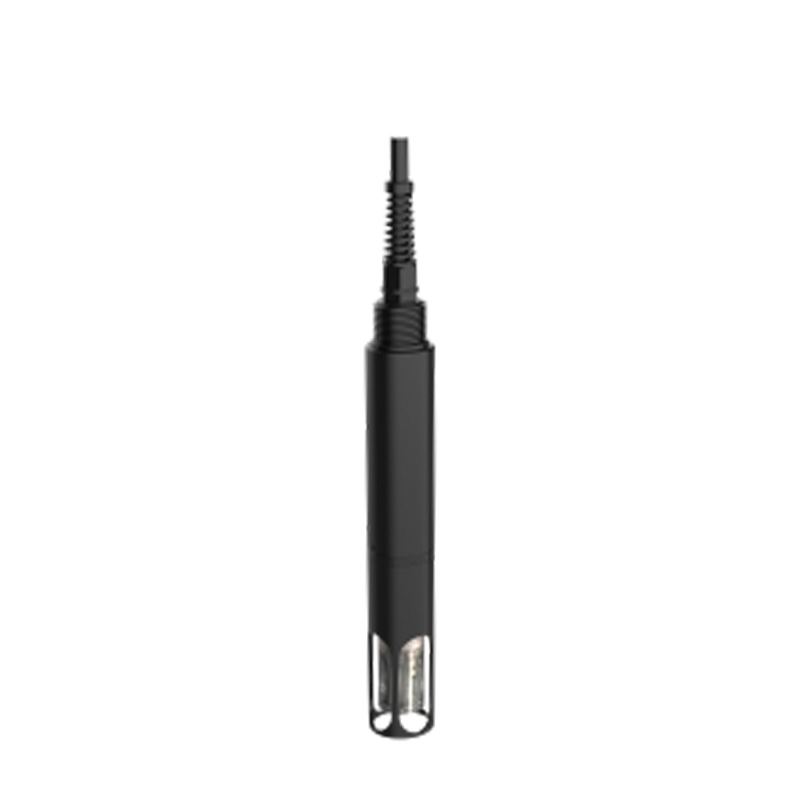Meteorological environment monitoring equipment supplier
Insist on doing high-precision customer favorite technology products

[ Function overview of water quality residual chlorine transmitter ]: This product is a device that measures the concentration of residual chlorine in water (hypochlorous acid, hypochlorite concentration). The use of a three-electrode system has the advantages of high measurement accuracy, long working life and no need for frequent corrections. This product is suitable for automatic dosing of circulating water, chlorination control of swimming pools, and accurate measurement of residual chlorine content in aqueous solutions in drinking water treatment plants, drinking water distribution networks, swimming pools, and hospital wastewater.
[Residual chlorine electrode]: Using an advanced non-membrane constant voltage sensor, there is no need to replace the diaphragm and chemicals.
[Water Quality Residual Chlorine Transmitter Detection Principle]: Through electrochemical reaction with hypochlorous acid in the water body, the residual chlorine concentration of the solution is obtained. This requires that the water body to be tested has a certain fluidity and the water flow rate remains stable.
[Residual chlorine electrode size]: length 266mm, outer diameter 30mm.
[Residual chlorine electrode electrical interface]: The upper and lower threads are both 3/4 threads, which is convenient for pipeline installation and sinking installation.
[Residual chlorine electrode protection level]: IP68;
[Residual chlorine electrode life]: The electrode service life is about one year. The specific service life is subject to the actual situation on site (the higher the concentration, the lower the service life).
[Residual chlorine electrode maintenance]: The equipment itself generally does not require routine maintenance.
[Precautions for using the residual chlorine electrode of the water quality residual chlorine transmitter]:
① After using the electrode, please clean the electrode head with clean water and cover it with a protective cover.
②. If dirt and mineral components adhere to the electrode diaphragm, the sensitivity will decrease and sufficient measurement may not be performed. Please ensure that the platinum ring is clean.
③. The platinum induction ring of the residual chlorine electrode should always be kept clean and bright.
④. If the platinum ring of the electrode becomes rough or covered with pollutants after measurement, it should be cleaned with an appropriate solution according to the nature of the pollutants.
⑤. In principle, the equipment should be calibrated before each use. It is recommended to calibrate it every 3 months for long-term use. The calibration frequency should be appropriately adjusted according to different application conditions (the degree of dirt in the application site, the deposition of chemical substances, etc.).
[Residual chlorine electrode calibration]: 485 supports 485 command calibration.
[Residual chlorine electrode measurement range]: 0-2mg/L; 0-10mg/L.
[Residual chlorine electrode measurement error]: ±5%FS
[Residual chlorine electrode measurement resolution]: 0.01mg/L.
[Working conditions of residual chlorine electrode]: Ambient temperature: 0-40℃; PH: 4-9; Flow rate: 30~60L/h.
[Residual chlorine electrode voltage resistance]: 0.6MPA.
[Power supply range]: 7-30VDC.
[Electrode cable length]: Default is 5m (10m, 15m, 20m can be customized).
[Average power consumption]: 0.19W.
[Communication interface]: RS485
[Residual Chlorine Knowledge]: The general name for the free chlorine and combined chlorine remaining in the water after chlorine is added to the water and exposed to it for a certain period of time. It means that after chlorine is put into the water, in addition to consuming part of the chlorine through the interaction with bacteria, microorganisms, organic matter, inorganic matter, etc. in the water, there is still a part of the chlorine left. This part of the chlorine is called residual chlorine.
[Meaning of residual chlorine]:
The amount of residual chlorine in the water is intended to protect personal safety and health. The residual chlorine in the factory water is ≥0.3mg/L, and the residual chlorine in the water at the end of the pipe network is ≥0.05mg/L. If the residual chlorine content is too low, bacteria will breed at the end of the pipe network and cannot be reached. The expected disinfection effect cannot be used if the water quality deteriorates. If the content is too high, after all, too high chloride content is harmful to human health.
Currently, the safest tap water disinfection method in the world is ozone disinfection. However, this method is too expensive, and the retention time of ozone-treated water is limited.